|
|

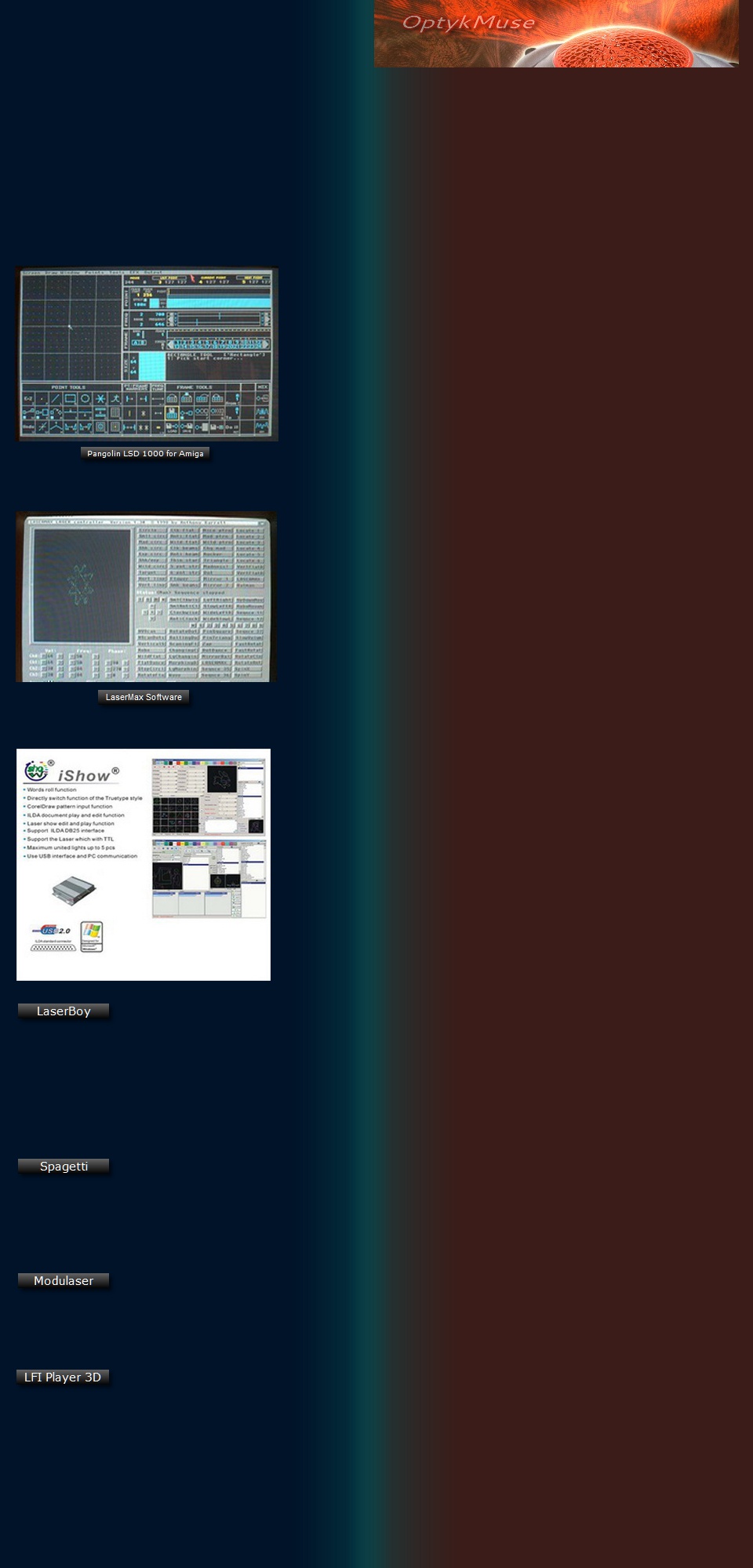







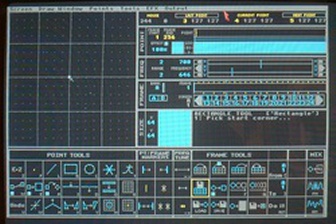
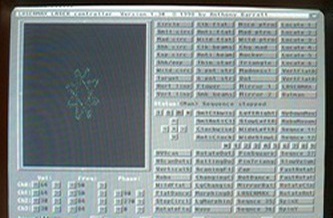
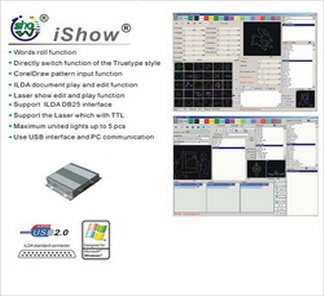
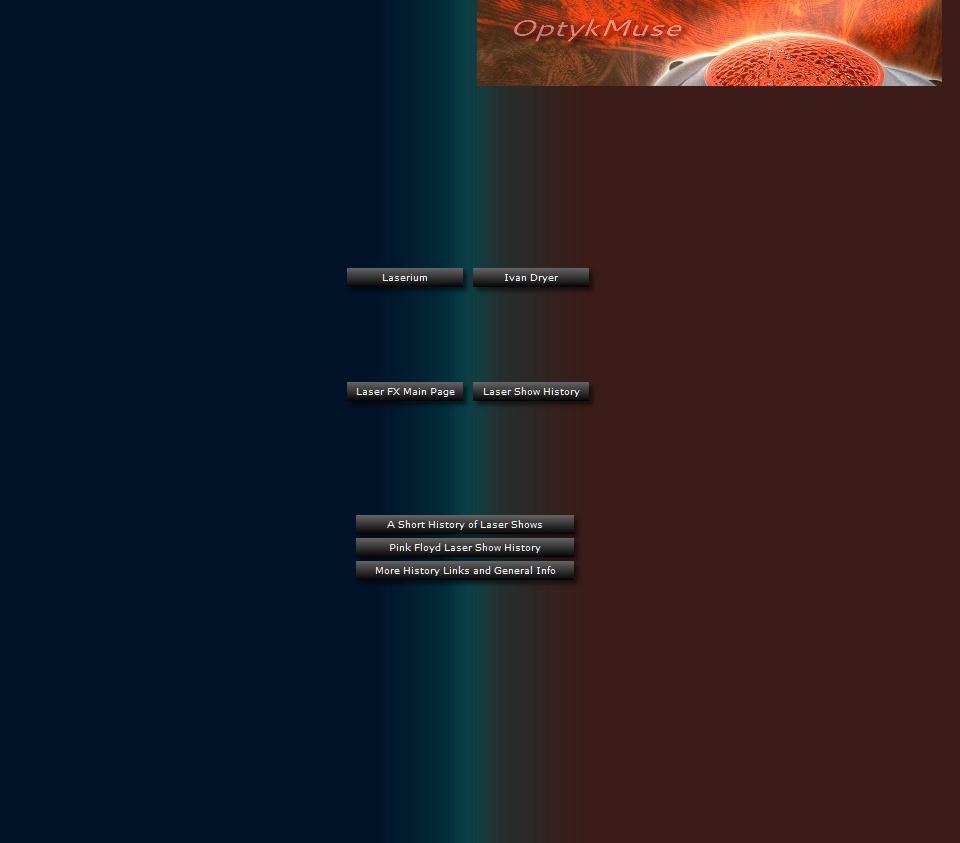
Laser Show Software
The software enables creation of the graphics and flow of the show.
There is an ever growing number of programs available for the hobby laser show enthusiast. I started out with this when there
were only a couple of affordable (free) programs available. The choices were either very expensive commercial software, or free
programs for the Amiga computer, and very little, that I knew of, in between. Initially, I searched the internet pretty extensively and
found two free programs that I settled with for my beginning with this laser show hobby. The first two detail what software I have
used and my experiences with it. Button links are below each screen shot for downloading from LaserFX website.
I eventually purchased a cheap ($110 I think) package that included software and a USB ILDA standard interface which can be plugged into just about any properly designed laser projector. In fact, you will want to make the ILDA interface part of your own design if you build a projector. It's easy to discover what that means with a quick web search.
As years passed, several free open-source software packages were made available by generous, skillful and dedicated programmers who were also bitten by the coherent light show bug. A web search now turns up some pretty nice options for the laser show hobbyist.
I eventually purchased a cheap ($110 I think) package that included software and a USB ILDA standard interface which can be plugged into just about any properly designed laser projector. In fact, you will want to make the ILDA interface part of your own design if you build a projector. It's easy to discover what that means with a quick web search.
As years passed, several free open-source software packages were made available by generous, skillful and dedicated programmers who were also bitten by the coherent light show bug. A web search now turns up some pretty nice options for the laser show hobbyist.
Pangolin Laser Show Designer 1000
Pangolin is a company that has produced professional laser show software
for many years. Laser Show Designer (LSD 1000), a screen shot shown
here, was their first entry into the professional software market, and was
designed to run on a Commodore Amiga 500 computer. Pangolin released
this software free of charge to laser hobbyists years ago, and when I
discovered it I was very excited and downloaded it right away. I bought a used
A500 and loaded it up with the software. It took a few days of playing with it to
get a feel for how it worked, but eventually I was producing animations for my
laser scanners I had just received. To my disappointment the scanners, which
were kit style SVS units (see Laser Show Hardware page) did not seem to
work at all. After much research and many forum conversations I was able to
get them tuned to an acceptable level and could see that they were not quite
up to the task of what I had seen in Laserium shows. Never the less, I plugged
along and produced my first "graphical" laser show for my family and friends
for our New Year's Eve party back in the late '90's.
LaserMax
Lasermax, shown here, is another program for the Amiga 500 that I later came
across. It is less a laser show design program and more a Lissajous
generator sample scanner. It has quite a few presets available and is also
customizable. It's been quite a while since I have used this software so I don't
remember the details of its operation. On thing I do remember is that it is
preset to display PAL (European standard video format) video on the monitor
instead of NTSC (American standard video format). The Amiga video format
must be changed to PAL to make use of this software. Once configured
properly, this software was really fun to experiment with and use. Just click a
'button' and the pattern is instantly displayed by the laser scanner. Play with
the setting just below the laser display window to tune the various parameters
controlling the scan. Even though I spent quite a bit of time figuring out how to
make this software work I felt it was well worth the effort.
iShow
iShow is an offering from China (Got it on eBay) that includes a CD with the
laser show software, a hardware interface, power supply, and cables. It uses
the standard ILDA 25 pin connector for connection to a laser projector.
The one I got has a USB interface. I still have not tried it out other than running the software just to see what it looks like.
There are newer interfaces with ethernet connection and cost twice as much as the one I bought, although even these still cost pocket change compared to the professional equipment.
According to a post on photonlexicon.com, there are issues with this software and hardware (driver issues?) so it appears it isn't the best bet for starting out with anyway.
The one I got has a USB interface. I still have not tried it out other than running the software just to see what it looks like.
There are newer interfaces with ethernet connection and cost twice as much as the one I bought, although even these still cost pocket change compared to the professional equipment.
According to a post on photonlexicon.com, there are issues with this software and hardware (driver issues?) so it appears it isn't the best bet for starting out with anyway.
Also worthy of mention is James Lehman's free "LaserBoy" software. It does not have a graphic user interface (GUI) but is menu
driven instead. Of note, it does run on Windows, LINUX, IOS (Mac), or Android. I won't explain why here, but you can go to his
website (link above) to see how it is able to run on all these platforms.
One thing to be aware of is that this application is not super intuitive... you really need to view (in order) the instructional video series he has on youtube (just search 'laserboy by james lehman' on youtube). But once you understand how it works you will see that it is much more powerful than you might have originally thought. It will, along with the menu items, display graphical vector representations of any laser show file you have loaded into it. This is where the fun happens, and you begin to see how much fun LaserBoy will be once you have learned how to use it! It's really worth a close look.
One thing to be aware of is that this application is not super intuitive... you really need to view (in order) the instructional video series he has on youtube (just search 'laserboy by james lehman' on youtube). But once you understand how it works you will see that it is much more powerful than you might have originally thought. It will, along with the menu items, display graphical vector representations of any laser show file you have loaded into it. This is where the fun happens, and you begin to see how much fun LaserBoy will be once you have learned how to use it! It's really worth a close look.
I believe that's it for now. I'm still doing occasional searches for this stuff so who knows when something
new will pop up. When it catches my notice I'll add it in here.
I would also suggest, if you happen to have access to one, that you try using an analog music synthesizer to generate some really wild laser patterns. I know it's not software but I didn't want to generate a new page for this just yet. Just a thought......
I would also suggest, if you happen to have access to one, that you try using an analog music synthesizer to generate some really wild laser patterns. I know it's not software but I didn't want to generate a new page for this just yet. Just a thought......
Spagetti is another laser show program (runs on Windows platform) that looks pretty interesting. It's not free, but it's pretty
inexpensive at $89 (as of 8-6-23). Might be worth a look. There is also a Spagetti forum where one can ask questions and learn
more about software operation and capabilities, might be a good place to start before purchasing. Of course you can also do a
web search with your favorite search site and find more about it also. Just from a quick look I see there was (maybe still is?) a
free demo version which, if true, is by far the best way to learn whether you like the software or not.
This software is kind of like LaserMax, but on steroids. Looks REALLY interesting for projecting abstract scans in real-time.
Platforms are Windows and Mac. Not sure the cost (euro currency shown) but according to Google currency converter it's a little
over $100. Starting to get up there but still not too bad. They do have a demo version you can download and try before you buy.
Check it out, it looks pretty cool!
This free open-source program that resides on SourceForge.net. It is actually called "LFI Player 3D Laser Display Software" but
couldn't fit that into the link button. It looks like maybe another lissajous pattern generator, but not sure as I have not yet
downloaded and played with it. The only interface at this time is the host PC's sound output jack. There isn't much in the way of
operating information but the screen shot looks like it would be pretty intuitive. A parallel interface has been suggested, which
would be a nice feature... we'll just have to wait and see if the software author decides to add it. The reviews on the site are all
5-star though, so it should be worth checking out!
OpenLase is another really interesting project that is worthy of delving into and seeing what comes out in the way of scanned
laser beams... The demo videos are pretty impressive! This is the project of Hector Martin, an IT consultant and hacker
(white-hat I assume). Currently it may take a bit of study and effort to set up a system around OpenLase but there is some
instruction on his github wiki to get you going, along with a nice page showing how he built up the laser scanner hardware. I
imagine OpenLase will progress to a nicely usable open source 'product', hopefully with a good GUI front-end for those of us
who are less adept at the process of pulling bits and pieces of software from here and there and assembling it all together into
something that actually works... looking forward to that. In the mean time, this will be and interesting challenge to me.
21 July 2024 -
I don't know how I missed these great laser show software entries / projects last time I was editing this page, but here are several more very interesting software / hardware laser projector projects I found today. Must have used different search terms this time, and got more hits on the search engine. With Windows getting more and more complicated with ever increasing hardware power demands I've kind of given up on that OS and I've been getting much more into using linux as an OS now so thought I'd look specifically for projects designed for use in that OS. My favorite linux distro has become the "Mint" flavor, specifically Mint Cinnamon which comes in both Ubuntu and Debian based versions. I've recently come into posession of a tiny slightly defective Intel NUC i5 mini PC (has one bad USB port, everyting else fine) onto which I installed the latest version of Ubuntu Mint Cinnamon linux. I'd like to turn this little gem into a laser projector.
So anyway, the following inclusions to this page will include a few linux projects and maybe a few that are windows based, although I'll probably favor the linux versions mostly now.
I don't know how I missed these great laser show software entries / projects last time I was editing this page, but here are several more very interesting software / hardware laser projector projects I found today. Must have used different search terms this time, and got more hits on the search engine. With Windows getting more and more complicated with ever increasing hardware power demands I've kind of given up on that OS and I've been getting much more into using linux as an OS now so thought I'd look specifically for projects designed for use in that OS. My favorite linux distro has become the "Mint" flavor, specifically Mint Cinnamon which comes in both Ubuntu and Debian based versions. I've recently come into posession of a tiny slightly defective Intel NUC i5 mini PC (has one bad USB port, everyting else fine) onto which I installed the latest version of Ubuntu Mint Cinnamon linux. I'd like to turn this little gem into a laser projector.
So anyway, the following inclusions to this page will include a few linux projects and maybe a few that are windows based, although I'll probably favor the linux versions mostly now.
This site looks interesting... Looks like someone has come up with a bunch of hardware designs that implement dedicated laser
projector boards that use various forms of plug-in Raspberry Pi SBC's (on board) to run the custom designed board hardware
from an istalled linux OS. I couldn't find any pricing on the site or where one might obtain any of the hardware, but probably just
missed a link somewhere.
This one is free software that will work fine as-is, but has a 'pro' version that adds a few nice features. The great thing is that the
pro version's upgrade cost is ONLY $29! That's practically free. Forgo a few coffee's at starbucks and you have the cash to get
the upgrade... not bad!
This software appears to have been written for Windows and Mac OS's but now there is a beta version for linux, so this fits into my current needs. It is designed to use several listed commercially available ILDA interfaces, and also will work with a modified PC sound card, which mods could probably be accomplished on a motherboard or RasPi audio section. Don't know for sure as I haven't tried that yet, but I have done it on a few old Amiga computers so I know it's at least a possibility. I'm willing to give it a try anyway.
This software appears to have been written for Windows and Mac OS's but now there is a beta version for linux, so this fits into my current needs. It is designed to use several listed commercially available ILDA interfaces, and also will work with a modified PC sound card, which mods could probably be accomplished on a motherboard or RasPi audio section. Don't know for sure as I haven't tried that yet, but I have done it on a few old Amiga computers so I know it's at least a possibility. I'm willing to give it a try anyway.














